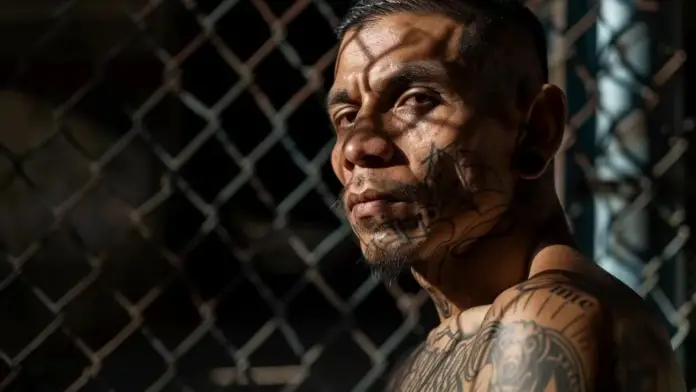The gangs that arrived three decades ago have gone from being dominant groups to subordinate ones, performing minor tasks under the supervision of the Mexican cartels
:quality(85)/cloudfront-us-east-1.images.arcpublishing.com/infobae/LBXNKBNVHJCLPG3VY4R2GHM4HY.jpg)
Chiapas, one of the most violent states in Mexico, faces a situation of extreme insecurity and violence controlled by organized crime. In recent months, the increase in involuntary migration and the displacement of people have exacerbated the crisis in the region. So much so that elections have even been cancelled in some areas due to the risk posed by the presence of criminal groups. Tapachula, a city on the southern border of the state, clearly reflects this reality.
For three decades, the MS13 and Barrio 18 gangs arrived in Mexico, including Chiapas, as part of a complex and multifaceted migration phenomenon. The intensification of deportation policies while seeking “the American dream” forced members of these gangs to return to their countries of origin, such as El Salvador, Honduras and Guatemala.
However, the conditions of violence and poverty in these countries led many of these individuals to seek new migration routes to the north, transiting through Mexico. Along the way, they established cells and support networks that replicated the criminal structures of their gangs, penetrating various Mexican regions, including Chiapas.
The southern Mexican border, due to its proximity to Central America and its strategic position on migration routes, became a key point for these gangs.
The arrival of MS13 and Barrio 18 in Chiapas was intensified by the importance of Tapachula as a neuralgic center of migration in the region. Since the late 1990s, the city has been a crucial point for thousands of Central American migrants trying to reach the United States.
The constant flow of people and the passage of the train known as “La Bestia” facilitated the settlement and operation of these gangs in the region. Thus, establishments such as migrant shelters and trafficking points became fertile ground for these gangs to extend their influence.
Central American gangs such as MS13 and Barrio 18, which once imposed their dominance, now operate under the strict control of the large drug cartels, particularly the Sinaloa Cartel and the Jalisco New Generation Cartel (CJNG).
The gangs, although still present in Tapachula, have seen their influence diminish. According to an investigation by Insight Crime, titled “Gangs and drug traffickers: the apex of all evils in Tapachula, Mexico,” it indicates that the control capacity of these groups has been absorbed by the drug cartels in Mexico, who impose the rules and direct the criminal operations.
Previously, the MS13 controlled parts of the migrant route that moved in “La Bestia,” but this reality has transformed over time.
The gangs now play subordinate roles in the criminal ecosystem. They are mainly dedicated to drug dealing and helping in the trafficking of migrants. These minor tasks are directed and supervised by the large cartels.
Gang members function as “street vendors” for drug traffickers, selling small quantities of drugs and collecting fees for the passage of migrants.
War between the CJNG and the Sinaloa Cartel
:quality(85)/cloudfront-us-east-1.images.arcpublishing.com/infobae/IHB6X5AQK5BYBLRKZEVYSX4AAI.png)
Tapachula has witnessed increasing violence due to the war between the Sinaloa Cartel and the CJNG, a dispute that has generated a climate of insecurity and increased territorial control by the cartels.
In 2023, the Navy (Semar) seized 200 kilos of cocaine belonging to the group of Nemesio Oseguera Cervantes, alias “El Mencho”, reflecting the magnitude of the conflict.
Local gang structures have been subjugated and put to work at the service of the big cartels. In Tapachula and its surroundings, criminal groups wage war and collect payment in the name of “Los Señores”. The city is tightly controlled by these organizations that have transformed the criminal landscape, the organization’s report notes.
Migration in Tapachula has been exploited by the CDS and the CJNG as a significant source of income. Coyotes, who move migrants from Central America to the United States, leave almost half the cost of the trip in the hands of drug traffickers, according to Insight Crime. This money is converted into weapons and other resources that sustain the war between cartels.
Tapachula has experienced a transformation in its criminal dynamics. The gangs that once dominated the region now operate under strict control of the drug cartels. The city remains a crucial point for drug and migrant trafficking, fueling the criminal economy and the confrontation between powerful criminal organizations.
Source: infobae







